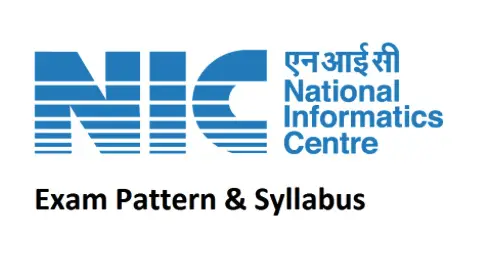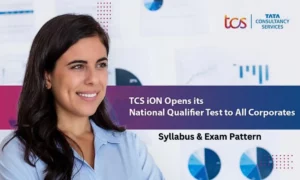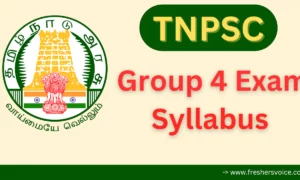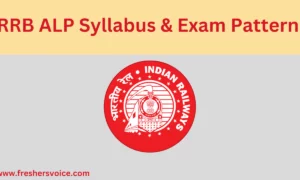The exam pattern and syllabus for the posts of Scientist B, Scientific Officer & Technical Assistant at NIC have been released. Given the nature of the exam being competitive and tough to crack, applicants should focus to learn each and every topic given to come out with flying colours. Continue reading to know the detailed syllabus as well as pattern for the examination.
Current Opportunities at NIC:
NIC exam notification for Scientific and Technical post vacancies was released on 03 March 2023 that are to be filled up on direct recruitment basis. There are about 598 vacancies for the Scientist B, Scientific Officer & Technical Assistant posts. Candidates with B.E., B.Tech, M.E., M.Tech, M.Sc, M.Phil can apply for the job. Basic pay ranges from Rs. 35,400 to 1,77,500 Per month. Freshers can also apply for the job. Selected candidates will be placed all across India. Applications will be available online from 04 March 2023. Click on the link NIC Recruitment 2023 to know more details and to apply. Last date to submit the application would be 04 April 2023.
 NIC Exam Pattern 2023 (Scientist – ‘B’/Scientific Officer /Technical Assistant)
NIC Exam Pattern 2023 (Scientist – ‘B’/Scientific Officer /Technical Assistant)
Candidate is required to go through a written exam followed by an interview. The mode of Examination is Online. Candidates will be given 120 MCQs with a time duration of 3 hours to complete. The questions can be broadly categorised into technical and generic questions. 65% of the questions cover technical areas whereas 35% of the questions will be generic in nature. Each question carries 1 mark. Hence, it’s a total of 120 questions with 120 marks.Qualifying marks for passing the examination are 50% for General/EWS, 40% for OBC, 30% for the SC/ST/PWD categories.
|
Sections |
Subject |
No. of Questions & Marks |
|
Generic ( Non – Technical) |
Reasoning & Aptitude |
42 |
|
Technical |
Computer Science |
78 |
NIC Syllabus 2023 (Scientist – ‘B’/Scientific Officer /Technical Assistant)
NIC has formulated the exam syllabus in such a way to test the core skills of the candidate ( Computer skills in this case) as well as the general skills a person should possess to properly fit for the job for filtering efficient candidates among a pool of applications received. The break ups of the general and technical subjects and the topics covered are given below.
Generic Questions ( Non – Technical Questions)
Generic area / Non – Technical area comprises 42 questions, each question carrying 1 mark with a negative marking of 0.25 per question. Go through the following concepts to score marks in non-technical questions. Those who are a bit reluctant about scoring in technical areas can focus on this part to leverage their marks.
-
Logical Reasoning
-
Analytical Reasoning Capabilities
-
Quantitative and Qualitative Abilities
-
General Aptitude
Technical Questions
The technical area comprises 72 questions, each with 1 mark with a negative marking of 0.25 per question. Go through the following subject topics and their sub-topics arranged topic-wise. As it is a major section with 65% of the total questions, candidates can focus on this section merely to score decent marks.
-
Probability, Statistics and Combinatorics : Conditional Probability, Mean, Median, Mode and Standard Deviation; Random Variables; Distributions; uniforms, normal, exponential, Poisson, Binomial, Permutations, Combinations, Counting, Summation, generating functions, recurrence relations, asymptotic
-
Digital Logic: Logic functions, Minimization, Design and synthesis of combinational and sequential circuits, Number representation and computer arithmetic (fixed and floating point).
-
Digital Computer Principles (Only for Scientific Officer /Technical Assistant) : Number systems- Binary, Decimal. Octal, and Hexadecimal Conversion, Arithmetic operations, Boolean expression , simplification, Postulates and theorems, Simplifications, K-map, Combinational Logic circuits – Adder, Subtractor, Multiplexer, Demultiplexer, Encode, Decoder, Sequential circuits – SR, JK, T, D, flip flops, shift registers, Asynchronous, synchronous and Module and counters.
-
Computer Organization and Architecture: Machine instructions and addressing modes, ALU and data-path, CPU control design, Memory interface, I/O interface (Interrupt and DMA mode), Instruction pipelining. Cache and main memory, Secondary storage. Electrical Engineering: Power Electronics, Signals and Systems, Electromagnetic Fields, Network graph, KCL, KVL, Node and Mesh Analysis, Transient response of DC and AC networks, Sinusoidal steady-state analysis, Resonance, Superposition theorem, Maximum power transfer theorem, Three phase circuits, Power and power factor in AC circuits.Analog and Digital Communication: Autocorrelation and power spectral density, properties of white noise, filtering of random signals through LTI systems, amplitude modulation and demodulation, angle modulation and demodulation, spectra of AM and FM, Super heterodyne receivers, circuits for analog communications, Information theory, entropy, mutual information and channel capacity theorem, Digital communications, PCM, DPCM, digital modulation schemes, amplitude, phase and frequency shift keying (ASK, PSK, FSK), QAM, MAP and ML decoding, matched filter receiver, calculation of bandwidth, SNR and BER for digital modulation; Fundamentals of error correction, Hamming codes; Timing and frequency synchronisation, inter- symbol interference and its mitigation; Basics of TDMA, FDMA and CDMA.
-
Electrical Engineering: Power Electronics, Signals and Systems, Electromagnetic Fields, Network graph, KCL, KVL, Node and Mesh Analysis, Transient response of DC and AC networks, Sinusoidal steady-state analysis, Resonance, Superposition theorem, Maximum power transfer theorem, Three phase circuits, Power and power factor in AC circuits
-
Analog and Digital Communication (Only for Scientist B): Autocorrelation and power spectral density, properties of white noise, filtering of random signals through LTI systems, amplitude modulation and demodulation, angle modulation and demodulation, spectra of AM and FM, Super heterodyne receivers, circuits for analog communications, Information theory, entropy, mutual information and channel capacity theorem, Digital communications, PCM, DPCM, digital modulation schemes, amplitude, phase and frequency shift keying (ASK, PSK, FSK), QAM, MAP and ML decoding, matched filter receiver, calculation of bandwidth, SNR and BER for digital modulation; Fundamentals of error correction, Hamming codes; Timing and frequency synchronisation, inter- symbol interference and its mitigation; Basics of TDMA, FDMA and CDMA
-
Programming and Data Structures: Programming in modern languages viz. Java, .Net, Open Source (PHP), Python, GoLang, NodeJS, etc. Functions, Recursion, Parameter passing, Scope, Binding, Abstract data types Arrays, Stacks, Queues, Linked Lists, Trees, Binary search trees, Binary heaps, Object Oriented Programming Concepts- Object, Class, Inheritance, Polymorphism, Abstraction and Encapsulation. Algorithms: Analysis, Asymptotic, notation, Notions of space and time complexity, Worst and average case analysis, Design; Greedy approach, Dynamic programming, Divide-andconquer, Tree and graph traversals, Connected competent, Spanning trees, Shortest paths; Hashing, Sorting, Searching, Asymptotic analysis (best, worst, average cases) of time and space, upper and lower bounds, Basic concept of complexity classes –P, NP, NP-hard, NPcomplete.
-
Compiler Design (Only for Scientist B): Lexical analysis, Parsing, Syntax directed translation, Runtime environments, Intermediate and target code generation, Basics of code optimization Operating System: Processes, Threads, Inter-Process communication, Concurrency, Synchronisation, Deadlock, CPU scheduling, Memory management and virtual memory, File systems, I/O systems, Protection and security.
-
Object Oriented Programming ( Only for Scientific Officer /Technical Assistant) : Object Oriented design concept, programming in C++ and on programming languages viz. Java, .Net, Open Source (PHP), Python, GoLang, NodeJS, etc.
-
Algorithms : Analysis, Asymptotic notation, Notions of space and time complexity, Worst and average case analysis, Design; Greedy approach, Dynamic programming, Divide and conquer; Tree and graph traversals, Connected Components, Spanning trees, Shortest paths, Hashing, Sorting, Searching. Asymptotic analysis (best, worst, average cases) of time and space, upper and lower bounds. Basic concept of complexity classes, N, NP, NP-hard, NP-complete
-
Databases: ER-model, Relational Model (relational algebra, tuple calculus), Database design (integrity constraints, normal forms), Query languages (SQL), File structures (sequential files, indexing, B and B+ trees), Transactions and concurrency control, NoSQL Databases, question on internals of Postgresql
-
Information Systems and Software Engineering: Information gathering, requirement and feasibility analysis, data flow diagrams, process specifications, input/output design, process life cycle, planning and managing the project, design, coding, testing, implementation, maintenance. Computer Networks: ISO/OSI stack, LAN technologies, Flow and error control techniques, Routing algorithms, Congestion control, TCP/UDP and sockets, IP(v4), IP(v6), Application layer protocols, (ICMP, DNS, SMTP, POP, FTP, HTTP), Basic concepts of hubs, switches, gateways, and routers. Wireless technologies, Network security – basic concepts of public key and private key cryptography, digital signature, firewalls.
-
System Software (Only for Scientific Officer /Technical Assistant): Lexical analysis, parsing, syntax directed translation, code generation and optimization, Assemblers, linkers and loaders microprocessors operating systems- processes, threads, inter-process communication , synchronisation deadlocks , CPU scheduling , memory management and virtual memory , file system , I/O systems , protection and security module.
-
Web Technologies: HTML5, CSS3, XML basic concept of client-server computing, web server, proxy server, web application development, MVC architecture, web services, frontend technologies.
-
Computer Networks: IOS/OSI stack, LAN technologies (Ethernet, Token Ring), flow and error control techniques, Routing algorithm, Congestion Control, TCP/UDP and sockets IP(v4) Application layer protocol (ICMP, DNS, SMTP, POP, FTP, HTTP, HTTPS): Basic concept of hubs, switches, gateways and routers. Network security: Basic concepts of public key and private key cryptography. Hash function, Digital Signature, Firewalls, User authentication- Token based, Biometric, Remote user authentication, Intrusion detection systems, honey pots, Denial of Service. Wireless network, 2G and 3G Networks, Bluetooth.
-
Cyber Security and Emerging Technologies (Only for Scientist B): Secure programming techniques, OWASP top 10 vulnerabilities, Concepts on IOT, Block Chain, AI, etc.
-
Cloud Technology (Only for Scientist B): Compute, Network, Storage Management Technologies, Edge Computing, etc.
These are the exam pattern and syllabus of NIC Recruitment 2023 for the post of Scientist – ‘B’/Scientific Officer /Technical Assistant. Give it a look and start preparing every topic without leaving anything behind to secure desired results. Before starting to prepare for the examination, try to understand the exam pattern and syllabus fully and the other requirements. To know more about the examination and other details, Click Here and take a look!



